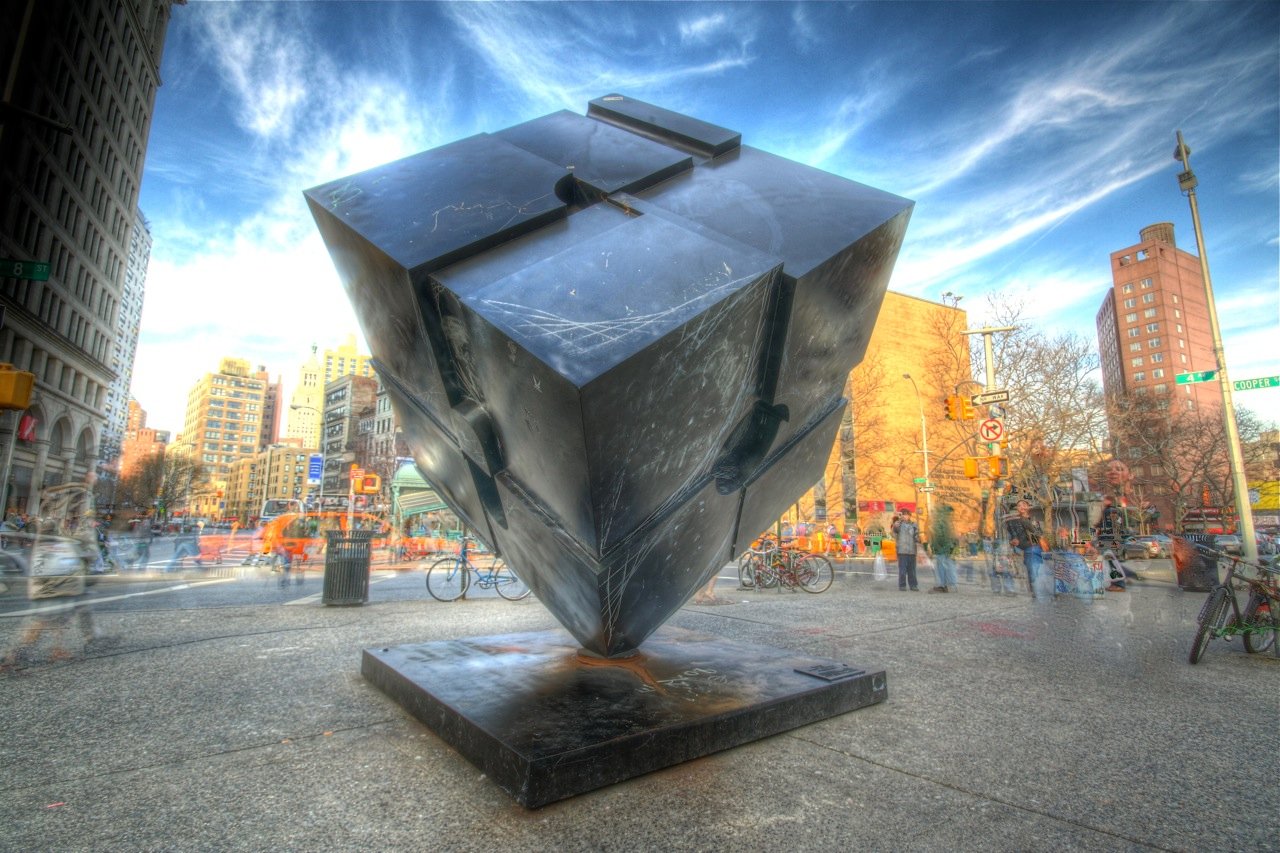
The plaza at Astor Place looks a bit different thanks to recent renovations, but one familiar landmark remains unchanged: the Astor Place Cube.
New Yorkers were dismayed when the spinning statue was boarded up in October 2014, ahead of its removal for a $180,000 renovation. There was much rejoicing when it appeared the artwork would return in June, but delays with the long-running, $17.2 million Astor Place Reconstruction Project pushed back the reinstallation to August, and then again to November 1.
“It’s an icon. It felt like it was a missing piece of the community,” Kareem Adams, a Bed-Stuy resident who was there when the Cube was put back into place, told AM New York.
Officially called the Alamo, the sculpture is by Bernard “Tony” Rosenthal, and was first installed on the Astor Place traffic island in 1967. The 1,800-pound, 15-foot-tall piece was originally only supposed to be on view for six months, but New Yorkers fell in love with the sculpture and the New York City Department of Cultural Affairs decided to make it a permanent fixture.
Over the years, the iconic sculpture has become a popular target for street artists and admirers, such as the colorful covering Olek crocheted for the piece in 2011. But a 2013 short film about an artist living inside the artwork was, alas, merely a marketing stunt.
Last year, with the cube still missing in action, New Yorker Alex Quick donned a costume of the artwork, standing at Astor Place and inviting passersby to spin him on Halloween. The costume was an instant hit on the streets, and went viral online. “I was like an old friend,” Quick told the Guardian.
Since it was last seen on the streets of New York, the artwork has undergone corrosion removal and been cleaned and repainted.
As the mighty cube was lowered onto its rotating pedestal by workers from the city’s Department of Design and Construction, a crowd of New Yorkers cheered, welcoming back one of the city’s most-beloved pieces of public art.